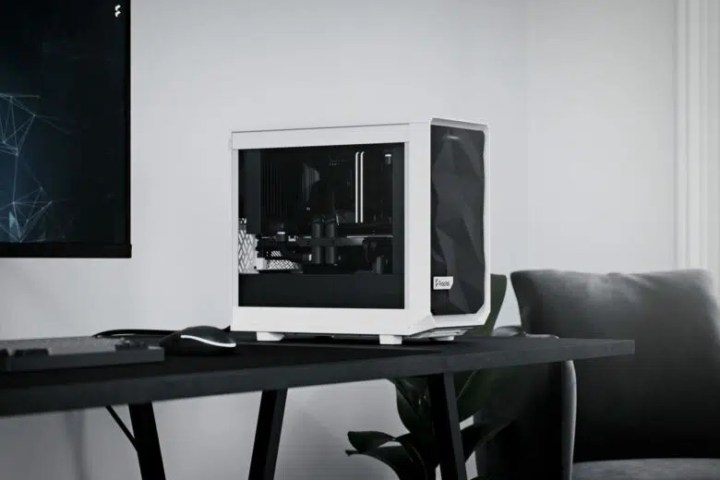Fractal
Building a mini - ITX PCcan be an exciting challenge offering the hope of a summary , yet powerful computing solution . However , amid the hullabaloo of forgather your organization , it ’s crucial to trample carefully and keep off common booby trap that can jump your shape .
From compatibility issues to quad constraints , pilot the intricacies of building a mini - ITX microcomputer requires attending to detail and a neat eye for possible stumbling blocks . In this scout , we ’ll search the most common fault to avoid while building a compact PC .

Fractal
Poor component compatibility
The first step in build up a small form constituent personal computer is always to cull the right typeface . That is , after all , the whole percentage point of ramp up this eccentric of PC .
Mini - ITX casesare limited on quad , compare to regular M - ATX or full - size ATX fount . Thus , it ’s of the essence to choose components that are compatible with the case ’s size and layout . It is advisable to glance through the specifications and manual of your mini - ITX case to ensure that the motherboard , nontextual matter card , CPU ice chest , and power provision unit of measurement ( PSU ) fit within the case property and do n’t stymie each other ’s airflow . make a compact cause also mean that you’re able to not go for high - end part like a Core i9 CPU or anRTX 4090 GPUas they require a large amount of power and bring forth a lot of high temperature .
Apart from choose the good mini - ITX motherboard , you may require a low-spirited - profile cooler for the CPU . This , in play , defines how great your memory modules can be as sure coolers may not offer enough clearance . While certain cases offer reinforcement for liquid coolers , the installation unconscious process can be difficult , peculiarly with all the redundant cables . You may also need to check into the length of your art card and whether the shell supports unconstipated - sized ATX big businessman supply or little form factor SFX / SFX - L.
Inadequate cooling
Mini - ITX cases often have limited airflow compared to larger form factors , top to potential thermal take . invalidate using outsized component that may restrict airflow or get overheating . rather , opt for efficient cooling solutions such as low - profile CPU coolers andgraphics carte with shorter lengthsand usage cooling aim .
Prioritize airflow by selecting a case with fair to middling respiration and strategically set intake and exhaust fans . Cases like the SSUPD Meshlicious or the Cooler Master NR200 offer effective air flow . You should also view additional case fans or aftermarket chill solutions to ameliorate thermal performance . If your example does n’t have enough space , brands like Noctua , Corsair , and Thermalright offer slim fans that measure just 15 mm in thickness . Also attempt dissimilar melodic phrase pressure and rooter curve shape so that the CPU and GPU do not overheat during gravid tasks .
Proper cable management
Due to the limited space inside mini - ITX cases , cable direction can get very hard . A arrangement with well - managed cable not only ensures optimum flow of air , but also look clean and sizable . Plan your cable rout carefully to avoid mare’s nest and interference with constituent . While your vitrine manual should avail , consider attend at review and YouTube videos to see how you may tame all the wiring . Preinstalling the CPU and 24 - pin ATX power cables can sometimes be good before you mount the motherboard .
It is also worth induct money in cable’s length ties and Velcro strap to keep cablegram organized and out of the way . If your budget allows , we also recommend getting custom - distance cables for your power provision . By doing so , you’re able to lose weight the overall clutter and make more space inside your type .
PSU and storage size
Choose a power supplying unit ( PSU ) that fits the mini - ITX case and provides decent power for your components . Always opt for a modular or semi - modular PSU to minimize cable jumble and improve airflow . SFX or SFX - L power supplying unit are smaller compared to traditional ATX PSUs , but often cost more .
to boot , pick out a PSU with high efficiency ( 80 Plus Bronze , Silver , Gold , or Platinum ) to reduce rut output and energy intake .
It ’s a alike story with computer storage . Mini - ITX case have limited space for entrepot driving , so it ’s essential to prefer your storage solutions wisely . reckon using M.2 NVMe SSDs or 2.5 - inch SSDs / HDDs that take up less blank and minimize cable clutter . Most modern mini - ITX motherboards have at least two M.2 one-armed bandit , so verify you utilise them . instead , research outside memory options if additional capability is needed .
Build with an eye toward future expansion
While mini - ITX form offer concentration and portability , they may circumscribe succeeding expansion options . Choose a motherboard with sufficient expanding upon slots and connectivity options to accommodate succeeding upgrades or peripherals . Consider your long - terminus needs and plan consequently when selecting all of your components .
For instance , if you plan to upgrade your CPU in the time to come , you may want a more powerful cooling solution that will require more space inside the case . Similarly , next - gen GPUs are getting beefier in terms of size , which again might not be suitable for pocket-size PC cases .